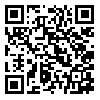Fri, Jan 2, 2026
Volume 7, Issue 4 (Autumn 2021)
Caspian J Neurol Sci 2021, 7(4): 185-192 |
Back to browse issues page
Download citation:
BibTeX | RIS | EndNote | Medlars | ProCite | Reference Manager | RefWorks
Send citation to:



BibTeX | RIS | EndNote | Medlars | ProCite | Reference Manager | RefWorks
Send citation to:
Hashemikamangar S S, Gharibzadeh S, Bakouie F. Small-world Structure in Children’s Featured Semantic Networks. Caspian J Neurol Sci 2021; 7 (4) :185-192
URL: http://cjns.gums.ac.ir/article-1-464-en.html
URL: http://cjns.gums.ac.ir/article-1-464-en.html
1- Institute for Cognitive and Brain Sciences, University of Shahid Beheshti, Tehran, Iran.
2- Institute for Cognitive and Brain Sciences, University of Shahid Beheshti, Tehran, Iran. ,fatemeh.bakouie@gmail.com; f_bakouie@sbu.ac.ir
2- Institute for Cognitive and Brain Sciences, University of Shahid Beheshti, Tehran, Iran. ,
Abstract: (2362 Views)
Background: Knowing the development pattern of children’s language is applicable in developmental psychology. Network models of language are helpful for the identification of these patterns.
Objectives: We examined the small-world properties of featured semantic networks of developing children.
Materials & Methods: In this longitudinal study, the featured semantic networks of children aged 18-30 months were obtained using R software version 3.5.2 and the igraph software package. The data of 2000 English (British)-speaking children, half boy and half girls, were gathered from existing databases of MCDI (between 2000 and 2007) and McRae feature norms. The growth pattern of these networks was illustrated by graph measures. Comparing these measures with those of the reference random networks, the small-world structure can be examined.
Results: To have a comparison between path length and clustering coefficient of featured semantic networks with those of random networks, we computed the Q quotient. The results showed that the values of the Q quotient at 18, 22, 26, and 30 months of age were all more than 1, which confirms the small-world characteristic of the networks.
Conclusion: Featured semantic networks of children exhibited a small-world structure, in which there was a local structure in the form of clusters of words. For global access, some words act as bridges connecting semantically distant clusters. These networks possess small-world property from the early months of age. The small-world structure cannot be seen in the less dense networks built with a higher cut-off threshold.
Objectives: We examined the small-world properties of featured semantic networks of developing children.
Materials & Methods: In this longitudinal study, the featured semantic networks of children aged 18-30 months were obtained using R software version 3.5.2 and the igraph software package. The data of 2000 English (British)-speaking children, half boy and half girls, were gathered from existing databases of MCDI (between 2000 and 2007) and McRae feature norms. The growth pattern of these networks was illustrated by graph measures. Comparing these measures with those of the reference random networks, the small-world structure can be examined.
Results: To have a comparison between path length and clustering coefficient of featured semantic networks with those of random networks, we computed the Q quotient. The results showed that the values of the Q quotient at 18, 22, 26, and 30 months of age were all more than 1, which confirms the small-world characteristic of the networks.
Conclusion: Featured semantic networks of children exhibited a small-world structure, in which there was a local structure in the form of clusters of words. For global access, some words act as bridges connecting semantically distant clusters. These networks possess small-world property from the early months of age. The small-world structure cannot be seen in the less dense networks built with a higher cut-off threshold.
Type of Study: Research |
Subject:
Special
Received: 2021/07/3 | Accepted: 2021/08/10 | Published: 2021/10/1
Received: 2021/07/3 | Accepted: 2021/08/10 | Published: 2021/10/1
Send email to the article author
| Rights and permissions | |
 | This work is licensed under a Creative Commons Attribution-NonCommercial 4.0 International License. |






